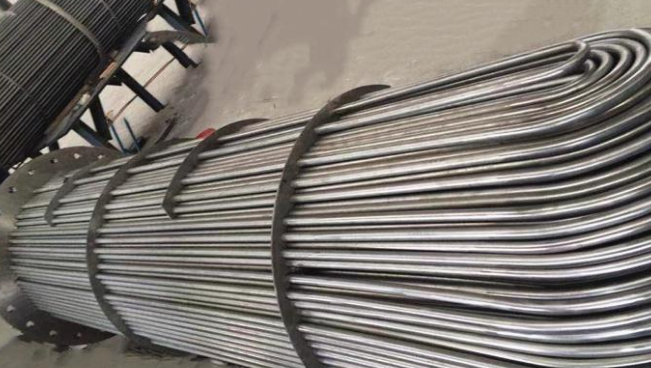Titanium is a metal chemical element, English name: Titanium, chemical symbol Ti, atomic number 22, melting point 1660℃, boiling point 3287℃, density 4.506g/cm, belonging to the IVB group of metal elements on the periodic table. Discovered by Gregor in 1791, it is a silver-white transition metal characterized by its light weight, great strength, and excellent corrosion resistance. Because of its stable chemical properties, excellent resistance to elevated temperature, low temperature, strong acid and alkali, as well as great strength and low density, it is known as "space metal".
Titanium is one of the most widely distributed and abundant elements in the crust, accounting for 0.16% of the crust mass, ranking ninth. Titanium ores are mainly ilmenite and rutile. The two most prominent advantages of titanium are high specific strength and strong corrosion resistance, which determines that titanium is bound to have a broad application prospect in aerospace, weapons and equipment, energy, chemical industry, metallurgy, construction and transportation and other fields. Abundant reserves provide a resource basis for the wide application of titanium.
Titanium was discovered in 1789, but it was not until 1908 that titanium dioxide was produced by sulphuric acid in Norway and the United States. In 1910, the first sodium method was used to produce titanium sponge in the laboratory. In 1948, DuPont produced tons of sponge Titanium by magnesium method, which marked the beginning of sponge titanium, namely, titanium industrialization and Titanium Pipes production.
01 Development process of titanium industry in China
China's titanium industry started in the 1950s. In 1954, Beijing General Research Institute of Non-ferrous Metals began to study the preparation technology of titanium sponge. In 1956, titanium was included in the 12-year development plan as a strategic metal. In 1958, the sponge titanium industry experiment was realized in Fushun Aluminum Plant, and China's first titanium sponge production workshop was established. Meanwhile, China's first titanium processing material production test workshop was set up in Shenyang Nonferrous Metal Processing Plant.

In the 1960s and 1970s, under the unified planning of the state, more than 10 sponge titanium production units represented by Zunyi Titanium Factory were built successively, and several titanium processing units represented by Baoji Non-ferrous Metal Processing Plant were built. At the same time, a scientific research force represented by Beijing General Research Institute of Non-ferrous Metals was formed. It became the fourth country with a complete titanium industry system after the United States, the former Soviet Union and Japan.
Around 1980, the production of sponge titanium in China reached 2,800 tons. However, due to the lack of knowledge of titanium by most people at that time, the steep price of titanium also limited the application of titanium, and the output of titanium processing materials was only about 200 tons, and the Chinese titanium industry was in trouble. Under the policy support of the state, the inter-ministerial Leading Group for Titanium Application and Promotion was set up in July 1982 to coordinate the development of the titanium industry, which contributed to the rapid and steady development of the titanium industry in China during the 1980s and early 1990s with the booming production and sales of titanium sponge and titanium processing materials.
To sum up, China's titanium industry has roughly experienced three development periods: the founding period in the 1950s, the construction period in the 1960s and 1970s and the initial development period in the 1980s and 1990s. In the recent century, thanks to the continuous and rapid development of the national economy, China's titanium industry has entered a period of rapid growth.
02 Titanium and titanium applications
Titanium is an essential structural metal developed in the 1950s. Titanium alloy has low density, high specific strength, excellent corrosion resistance, low thermal conductivity, non-toxic no magnetic, welding, excellent biocompatibility, decorative surface and other characteristics, widely used in aviation, aerospace, chemical, petroleum, electric power, medical, construction, sporting goods and other fields. Numerous countries in the world have realized the importance of titanium alloy materials, and have carried out research and development on it, and have been applied in practice.
In 2011, the proportion of global commercial aviation consumption reached 46%, and the proportion of military titanium material was 9%(mainly for military aviation), and the proportion of titanium material consumed in the entire aviation sector was more than 50%. Industry consumes 43 percent and emerging markets 2 per cent.
The demand structure of titanium products is different in different regions. In North America and the European Union, especially the United States, which have developed aerospace and military defense industries, more than 50% of the demand for titanium products comes from the aerospace and military defense fields. In Japan, industrial titanium from industries such as chemicals dominates demand. Aerospace accounts for only 2% to 3% of Japan's titanium demand, according to the Japan Titanium Association. Similar to the situation in Japan, the majority of titanium products demand in China comes from the chemical and energy sectors, with aerospace accounting for only 10%.
While China has become one of the world's largest producers and consumers of the metal, much of its production has been limited to lower-grade titanium, which is used in bicycle frames, golf clubs or anti-corrosion tubing used in the chemical industry. However, in recent years, there has been a significant increase in the amount of titanium used in aerospace in Asia, indicating that the titanium market has a bright future.